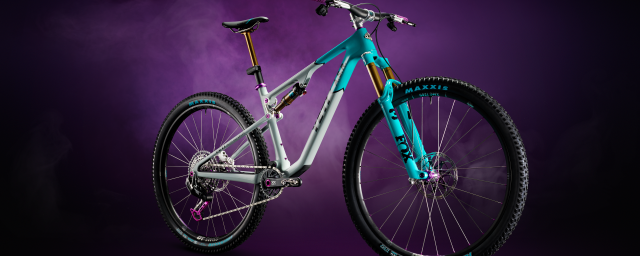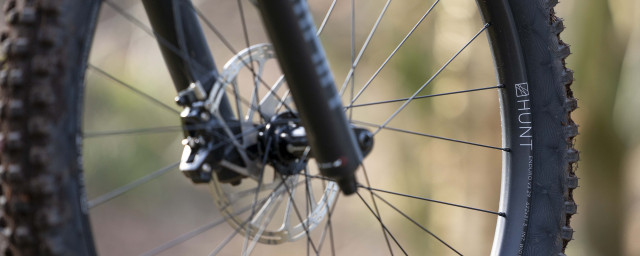How to ride switchbacks

Switchback corners are the feature where most newbie riders hesitate and crash on as they build mountain biking experience. These corners, which route through 180 degrees, are fundamental to many trail builds. Switchbacks allow master trail builders to extend your singletrack riding distance by cleverly managing elevation and topography.
- MTB enduro racing for beginners - how to prepare for your first race
- What is downcountry?
- How to start mountain biking
Without switchback corners, singletrack descents would finish far too soon. Switchback corners link and shape the trail, giving it more distance and character. But they can be tricky to ride. Especially steep, off-camber switchbacks.
A few fundamental braking, line-choice, and body positioning principles will help you master switchbacks.
They are meant to slow you down – so go slow
Corners that are tight and shaped to regulate your riding speed should be respected. You can’t go speeding through a switchback. This is the mistake that most novice riders make. Buoyed by the power of hydraulic mountain bike brakes, they arrive at the switchback entry point with way too much speed, lock the brakes, and overshoot. Not only is this dangerous, due to the rider crash risk, but it also ruins the run-in with deep braking bumps, an annoyance of the highest order for committed trail builders and more skilled riders.
How slow should you go through a switchback? Very. It’s effectively a 180-degree corner: you are going through a significant change of direction, often with little room for turning. Mountain bikes turn best when they are leaned over; for that to happen, you need to be off the brakes. So brake well before you begin to turn.
When the brakes are applied, physics and the gyroscopic dynamics of your mountain bike’s wheels, make it want to track in an upright posture. That’s why you want to brake early and ease off the brakes at the switchback’s turning point. This allows the bike to ‘relax’ under reduced gyroscopic force, and lean through the corner.
Tyre’s also work at their best when asked to do one job, whether that’s to grip when braking or grip when cornering. Braking while turning can overload the tyre and cause it to break traction or wash out. This isn’t something you want when tackling steep switchbacks.
Take the wide line
Where switchbacks are often tight, taking one on using the centre line on entry can compound the switchback’s already acute angle. This sucks momentum and makes the corner tougher to tackle than it already is. To retain momentum, riders take the widest line possible or employ the high line.
If it’s a lefthand switchback, go as far right as the trail construction allows. You’ve been conservative with your braking point and can now ease off the brakes and initiate the lean. It’s important to trust the bike, allowing it to lean, instead of trying to lean it through switchback with your body.
Turning through a lefthand switchback, for example, you want to weight the right-side pedal to centre your mass over the bike’s tyres, adopting proper cornering technique to optimise traction. Mountain bikes turn with the influence of a rider’s hips and eyes. You’ll roll where you look and direct your hips. It’s important to have your eyes tracking ahead of where you want the bike to go through a switchback's approach, entry, mid-point and exit.
Mountain biking is like many other sports: your body’s interaction with the equipment and terrain is primed and guided visually. That is why fast and experienced riders always appear to look much further ahead on the trail than newbies when descending. It is because they are scanning, anticipating, and recalculating their body position and bike control, in accordance with trail features and corner shape.
If you don’t look ‘through’ the switchback and visually lock onto any point during entry, once you are ‘in’ the corner, you’ll simply end up stalling at the exact point you fixated on.
Skids are a false economy
When switchbacks are tight and off-camber, you’ll see some riders grab a lever full of back brake to lock-up and skid into and around a corner. This isn’t a great technique because it can often lead to a great loss of momentum but importantly, it ruins the work of hardworking trail builders.
While definitely satisfying, much like in car racing, skidding isn’t fast. It looks cool, but sliding the rear around a switchback can suck momentum once you reach the exit, which forces you to pedal out of the corner. If in a tough descending gear, this will destroy any and all momentum.
As we’ve mentioned before, hit that high, or wide line and lay off the brakes as much as possible. This will optimise your exit and keep the speed flowing.
The endo turn is not for everyone
On more advanced trails, riders might encounter tighter and steeper switchbacks. These corners are so steep or narrow that the conventional riding technique doesn’t apply. For most riders, it means a dismount, a quick jog through the switchback, and a remount before riding along the rest of the trail.
But what if you want to conquer the most intimidating off-camber switchbacks? You could try the endo, enduro, or known by some, as the ‘French’ turn.
A technique developed by necessity in the Alps, where extreme switchbacks are common, the endo turn involves lifting the rear wheel and manipulating the rear of the bike around a corner using body weight.
To get this technique down, you’ll need to start by nailing your endo skills (lifting your rear wheel) on flat ground. Here, you’ll need to learn how to manipulate your body weight forwards, while pulling the right amount of front brake to lift the rear wheel in a controlled manner. If you feel yourself tipping too far forwards, or simply want to finish the endo let go of the front brake and that’ll lower the rear wheel, the complete opposite of what you’ll do when pulling a wheelie.
When you’re comfortable with endos, you can then work with shifting your body weight laterally, or towards the left and right (but not at the same time). Using your bike’s head tube as a pivot point, use your hips to influence the direction of where you want to rear end to swing. Start small, then as with any mountain bike technique, work up.
On the trail, the nuances of this technique get more advanced as the trail steepens, and corners get more technical. Though, it must be noted that you don’t need to pull the rear wheel far into the air to get the job done. Get some practice in and build up your experience and you can pull off endo turns whilst rolling, a skill often employed by the best enduro riders to retain momentum, whilst negotiating the tightest and steepest of switchbacks.
Switching it uphill
The switchback techniques you use when descending, correlate with climbing. Go for the widest possible line, and the moment you have the bike-orientated mid-corner, apply all that leg power to drive for the exit.
Again, the principle is momentum. Mountain bikes respond best dynamically when they are rolling. A static mountain bike wants to stall and fall over to one side.
Approach an uphill switchback in an appropriately low gear and aim to track the front wheel as widely as possible, the rear will follow. Be sure to look up, look towards the exit of the corner and continue pedalling as loss of momentum can be detrimental to successfully tackling a switchback. If riding a bike with a longer geometry, such as an enduro bike, you’ll need to take even more care with your uphill switchback technique, as the bike’s length effectively reduces the space a corner has to offer.
Rocks, roots, dust, and mud can reduce traction uphill switchbacks. This is where correct tyre pressure and rear-suspension set-up prove their worth, allowing you to worry less about traction, and apply all the pedalling power you have when driving for that switchback exit point. However, correct line choice is important here, because if you can avoid slippery sections or effectively manipulate the bike over mid-switchback obstacles, you’ll minimise the chance of losing momentum and stalling mid-corner.














